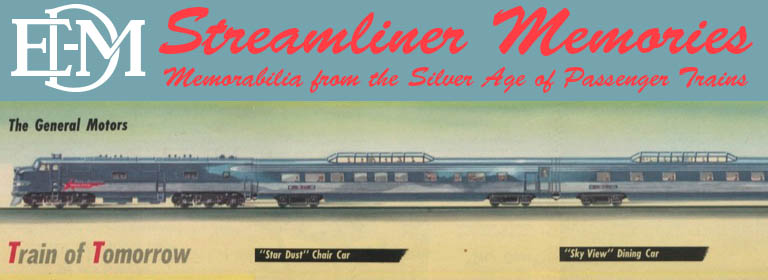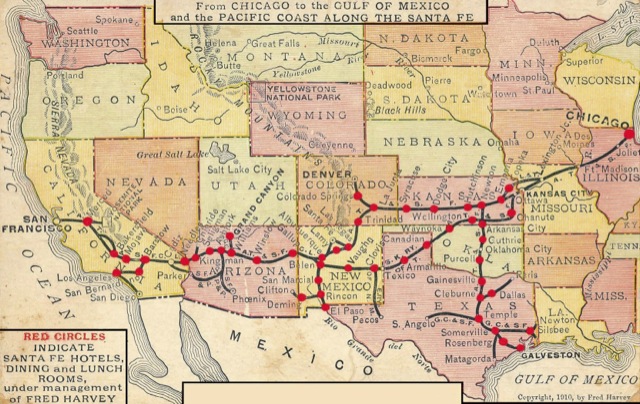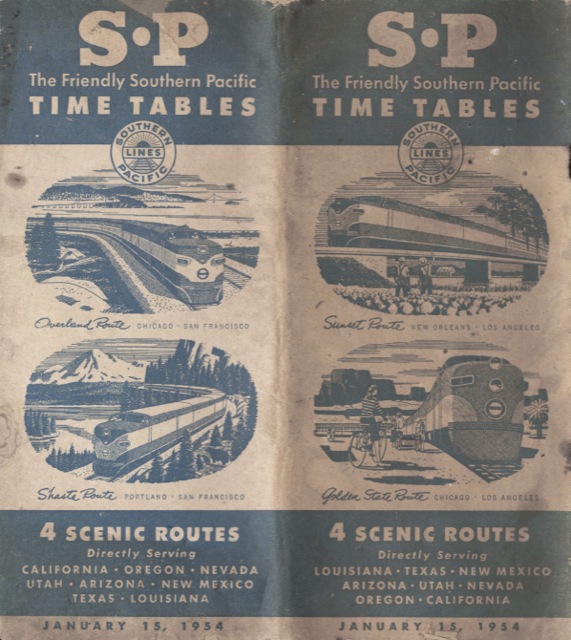Printers finally developed the four-color process well enough to use on postcards in 1939. The results are sometimes called Photochrome postcards, which is a bit of misnomer as the original multicolor process used by Detroit Photographic was called Photochrom. Photochrome cards were both more realistic looking and less expensive than printing eight to twenty colors on a card, as the Photochrom/Phostint process required. These Fred Harvey cards are probably from the late 1950s.

Click image to download a PDF of this postcard.
The first card shows a Santa Fe streamliner going around a curve. The back of the card says, “Grand Canyon National Park – Arizona – Santa Fe Streamliner Near Ribera.” In fact, Ribera is in New Mexico, not Arizona, so the mention of Grand Canyon National Park was gratuitous. The curve, shown on the aerial photo below, is not quite a double horseshoe as the card claims but does indicate that the train in the photo is ascending a pretty good grade.









